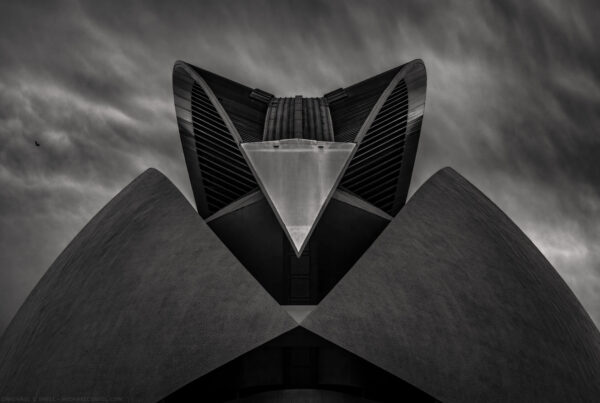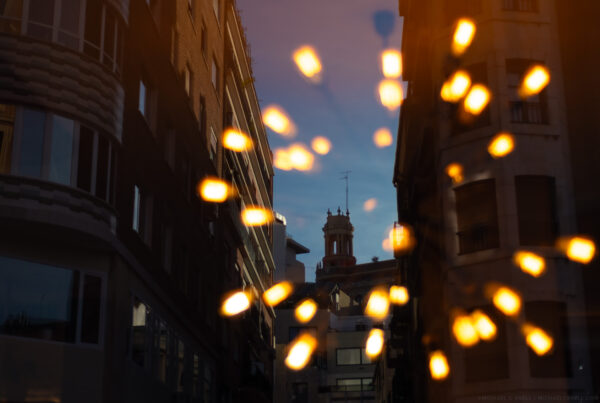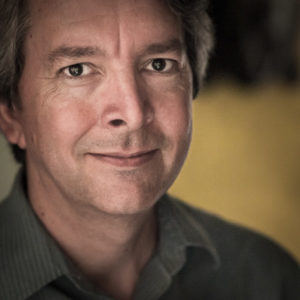The real way to experience any place is to get out on your own and immerse yourself. Leave the heavily-trafficked tourist areas and explore. My favorite way to do that is with a road trip. You’re not limited to the places served by trains, planes, or public transportation and — most importantly — you can stop anytime you see something of interest because you’re under your own steam.
As a photographer, I also love the ability to be able to take what gear I want, without being so concerned about weight restrictions or being packed efficiently to easily pass through security lines at airports or train stations. Even if I’ve flown to an area first, then rented a car, I can repack things more conveniently once I get to the car.
Last Spring, following a trip I made to speak at a conference in the Czech Republic, I decided to stay on for another week to explore Spain. I’ve been to Spain a few times, but this would be the first time without a group, the first time with my own wheels. I wouldn’t be alone, my wife was coming along and was massively helpful as her Spanish skills far exceed my own. Far.
Hertz hooked us up with a car, and picking it up at the airport in Madrid was pretty convenient, even though our flight had been delayed by a French air traffic controller strike for 4 hours. We left the secure part of the international airport and took the escalator to the lower level to find the rental car counters at the end of the building. We were told we’d been “upgraded” to a Mercedes, which actually worried me a bit. I’d seen some of the narrow streets of the old Spanish cities and had purposefully requested something small. But the Mercedes turned out to be fine and not all that large. It served us well and we returned it without a scratch or scuff.
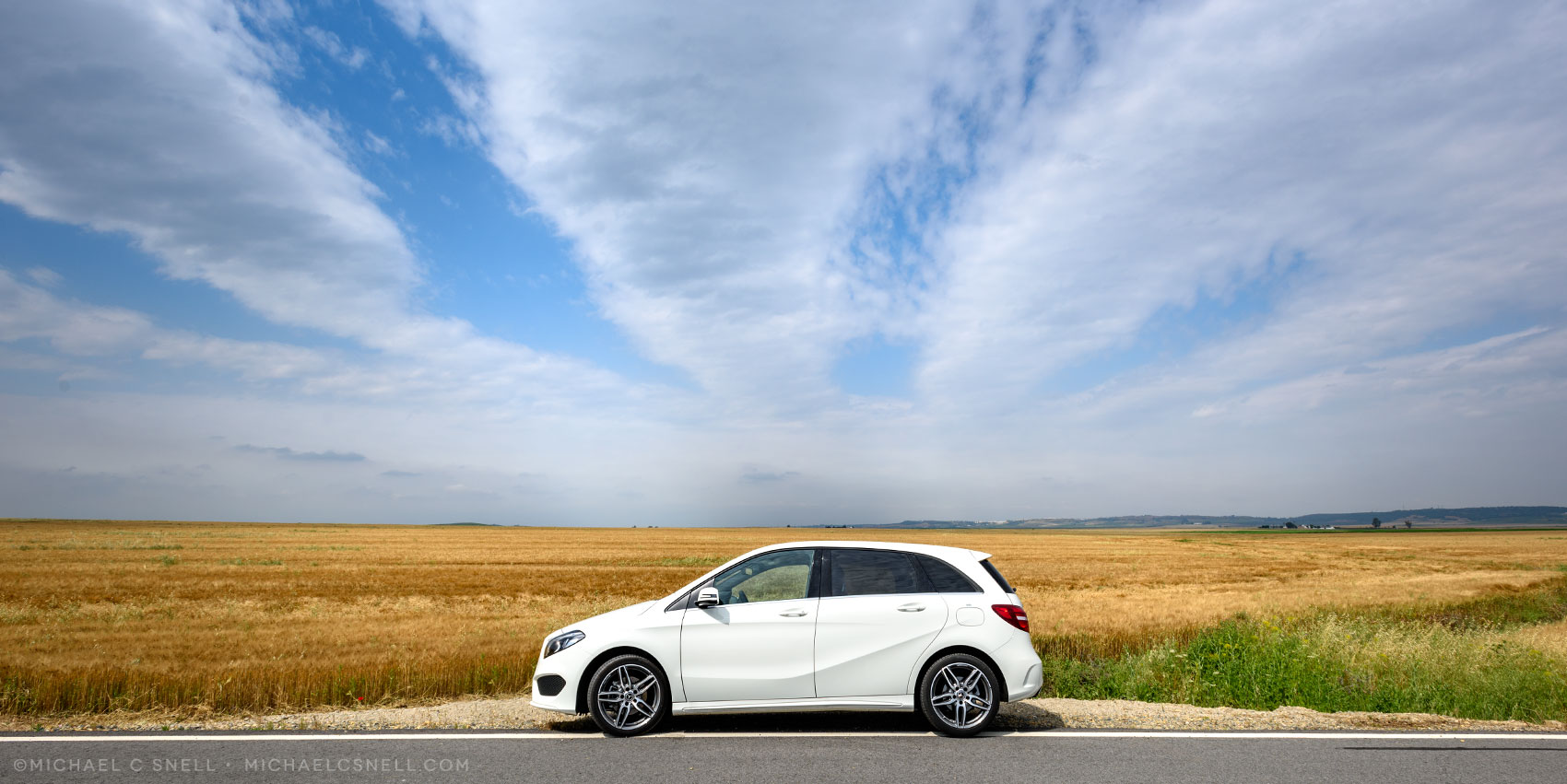
A portrait of our Hertz car, shot just outside of Carmona in Andalusia.
Since we were running late, we immediately set off for our first night in Almagro, hoping we could just make it before dark. Getting out of Madrid proved to be the trickiest part, largely because we were no sooner on the road when we discovered that the car’s onscreen systems had all be set to not Spanish, or English, but Danish.
We’d deal with that later.
One wrong turn took us into Madrid traffic, but we soon corrected and were on our way south toward Almagro. We arrived just at dusk and checked into our pleasant room overlooking a courtyard fountain. More on the hotels later, as I’ll be writing about Paradores a lot on this blog.
First things first, Sally set to work Googling YouTube videos for changing the language on your Mercedes. Not an easy task in the car itself, when you can’t read any of the instructions. She persisted, and succeeded, and the next day we had navigation to assist us.
Our second night in Carmona brought a hint of things to come as it required driving through an ancient (narrow) stone entry gate to get to our former-castle-Parador, but it was easily accomplished. The following day, however, proved to be our biggest test of whether the Mercedes would be “narrow enough.” Spoiler: it was. Barely.
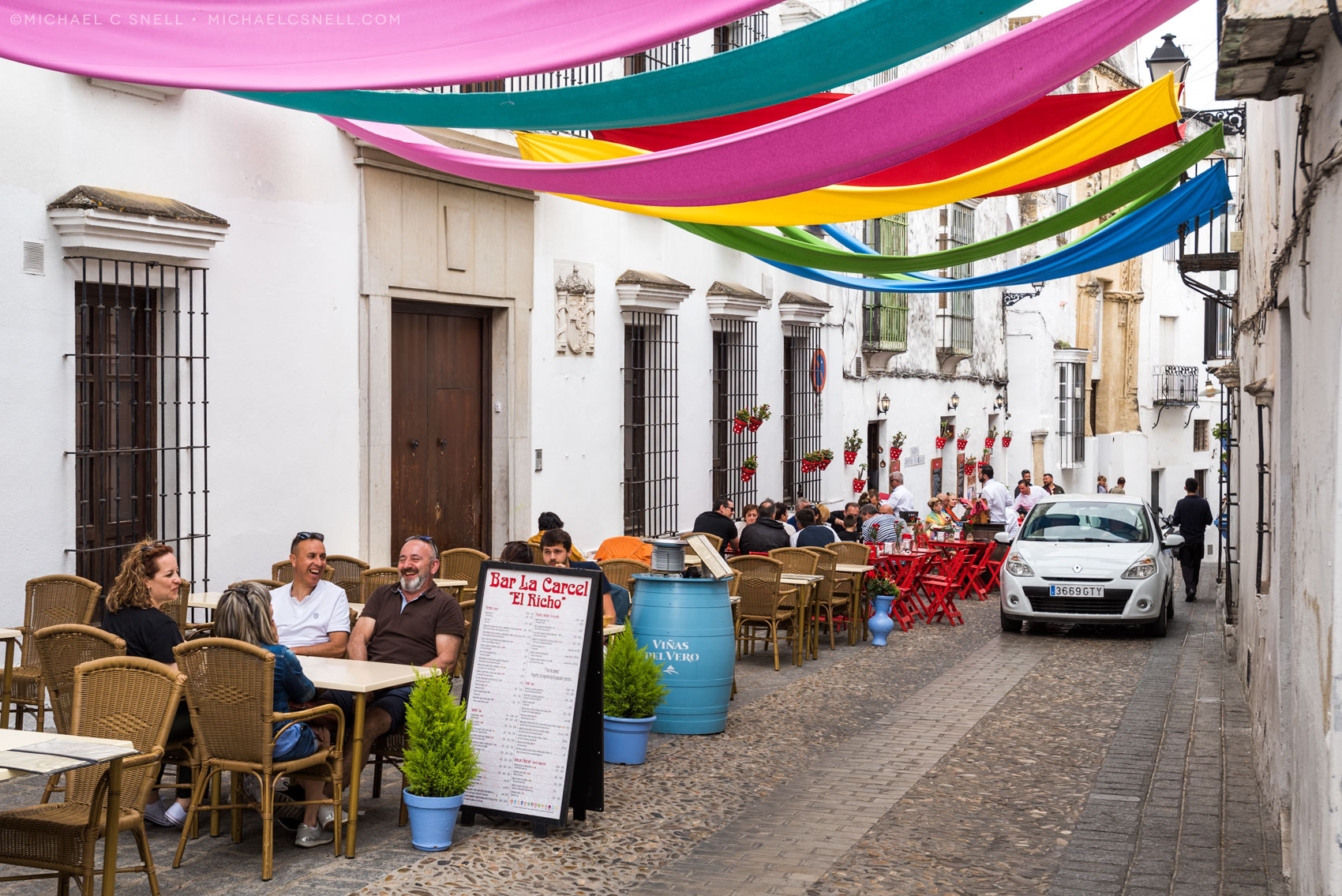
A street in Arcos de la Frontera that doubles as outdoor dining space for local restaurants.
Entering Arcos de la Frontera, we began regularly questioning our navigation system. Surely these alleyways filled with diners and bar patrons weren’t streets, and certainly not the most main street to our Parador, were they? They were. The nav system led us straight to our hotel, but only after this particularly narrow stretch were we had to drive through the buttress of St. Mary Parish:
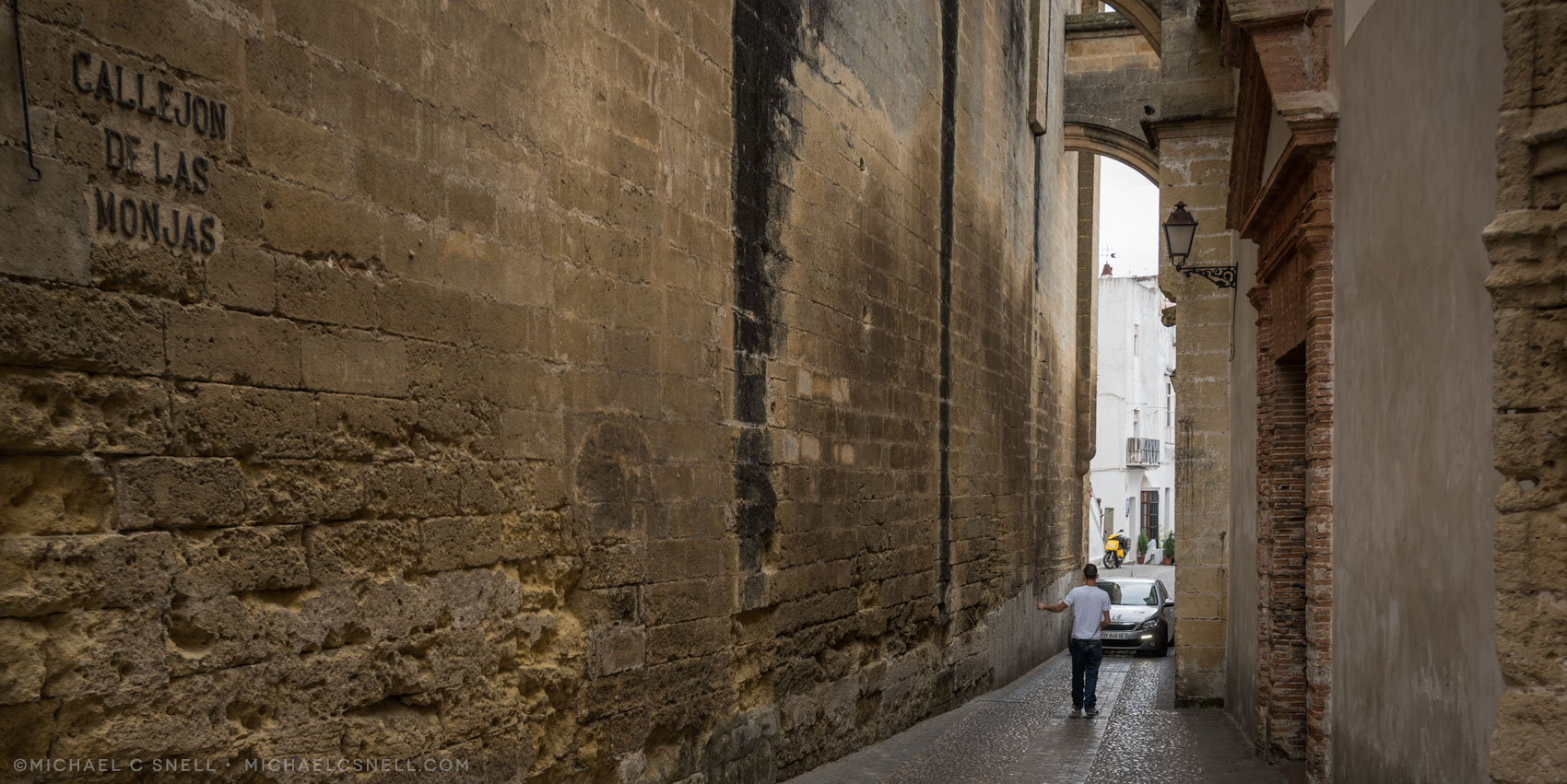
We made it, but only because we learned how to fold in our side mirrors.
Parking also proved a bit nerve-wracking, but we managed. The Spanish, it would appear, are expert at parking and can put cars in spaces that the rest of us would never consider. But by this time, we were almost feeling like locals.
Once we’d park the car each day, we would just explore the towns on foot. There were always lots of restaurant options and shops within walking range of the Paradores, and it made for many enjoyable strolls through beautiful white-washed architecture (although we did begin to notice that the outside corners of nearly every building bore the scars of paint from less fortunate drivers that didn’t make the turn properly).
On one of my walks in Arcos de la Frontera, I spotted this one-seater parked on a particularly narrow alley. My first thought was “so THAT’s how they manage these skinny streets” and my second thought was “is that their GARAGE?:”
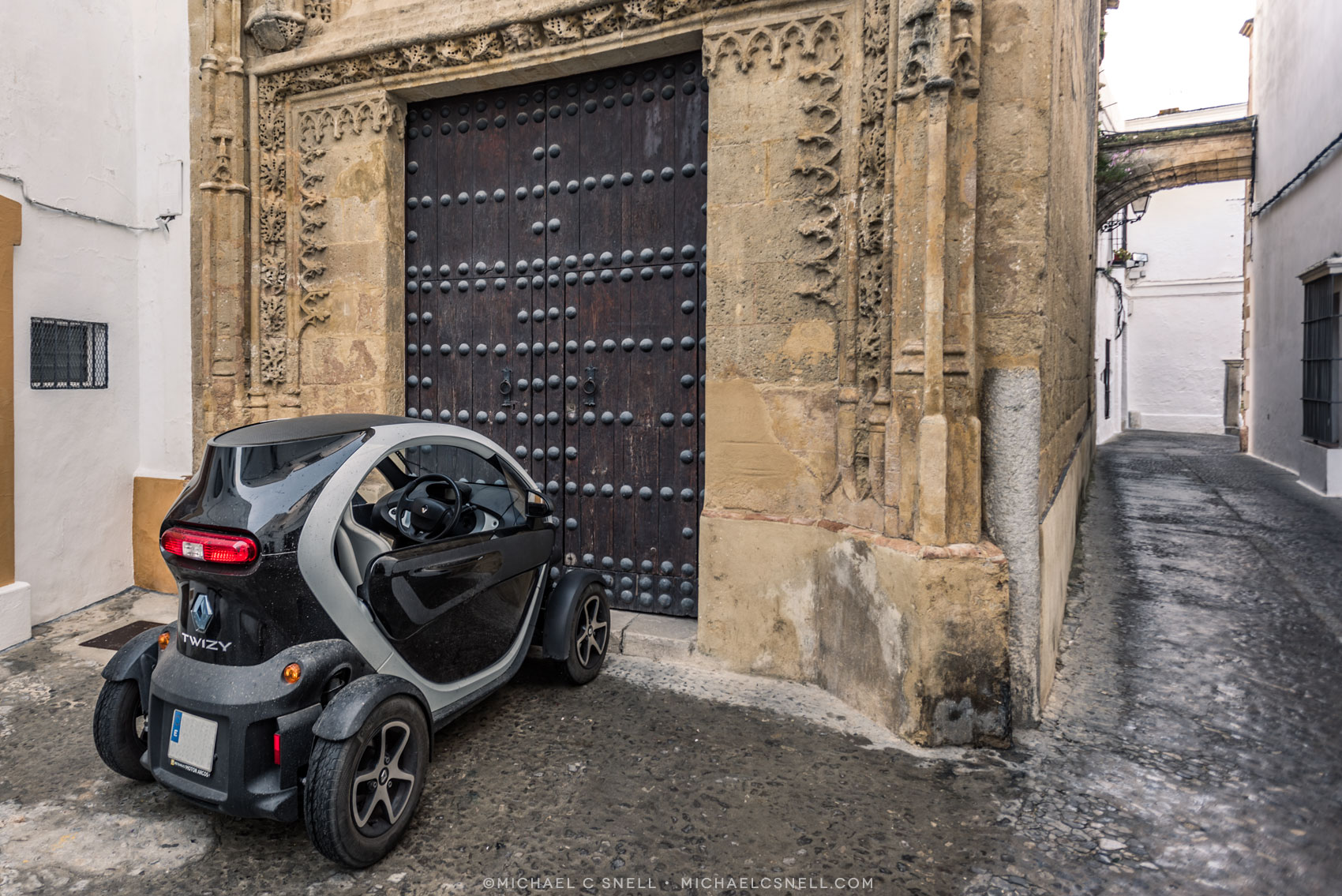
The narrowest car I've ever seen. And the nicest garage.
All-in-all, we loved traveling Spain by car. Thankfully I had Sally along to work out the difficult questions about where we could park, how to pay for underground parking, how long could we park — overnight? Lots of questions that I don’t remember being taught in my minimal Spanish class in junior high school.
Another aspect of road trips that I enjoy is that I find that when I’m responsible for navigating or driving myself somewhere, I have a much better idea of where I am. Which way is north? Which direction was that great looking restaurant? How far was it back to that quaint village? I do a lot of organized travel where you are taken around in a bus or van and, as much as I try and pay attention to where we are going, I always find myself a little disoriented upon arrival. That’s part of why I study Google maps prior to trips even if I’m not driving. I’d hate to find out at some point that my hotel had been one block from some monument or historic site and I never knew. I like to have my bearings.

Approaching Ronda.
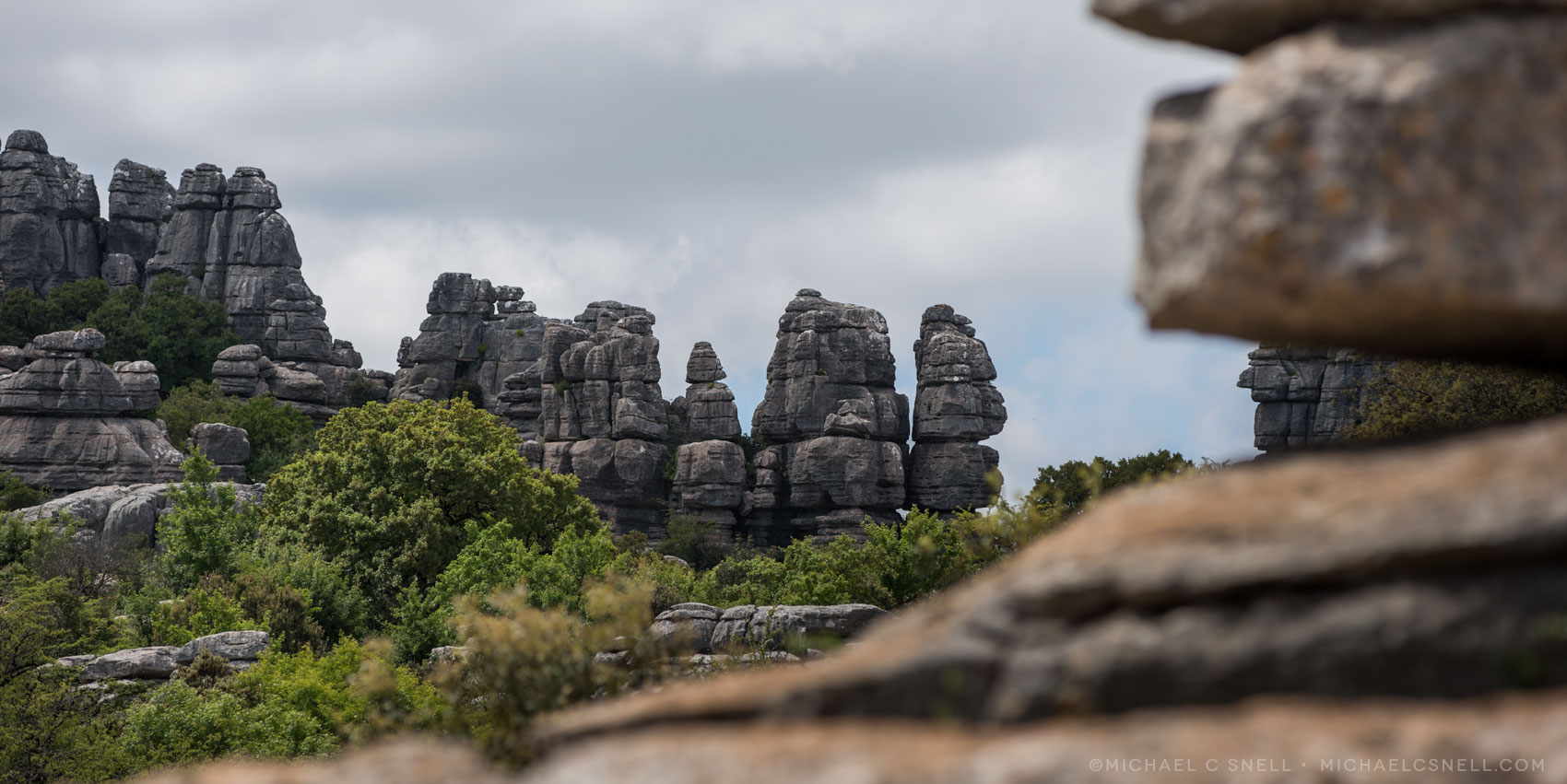
Time for a short hike among the rock formations at Torcal de Antequera.

The southerly route from Ronda to Ubeda let us see the Mediterranean at Malaga.
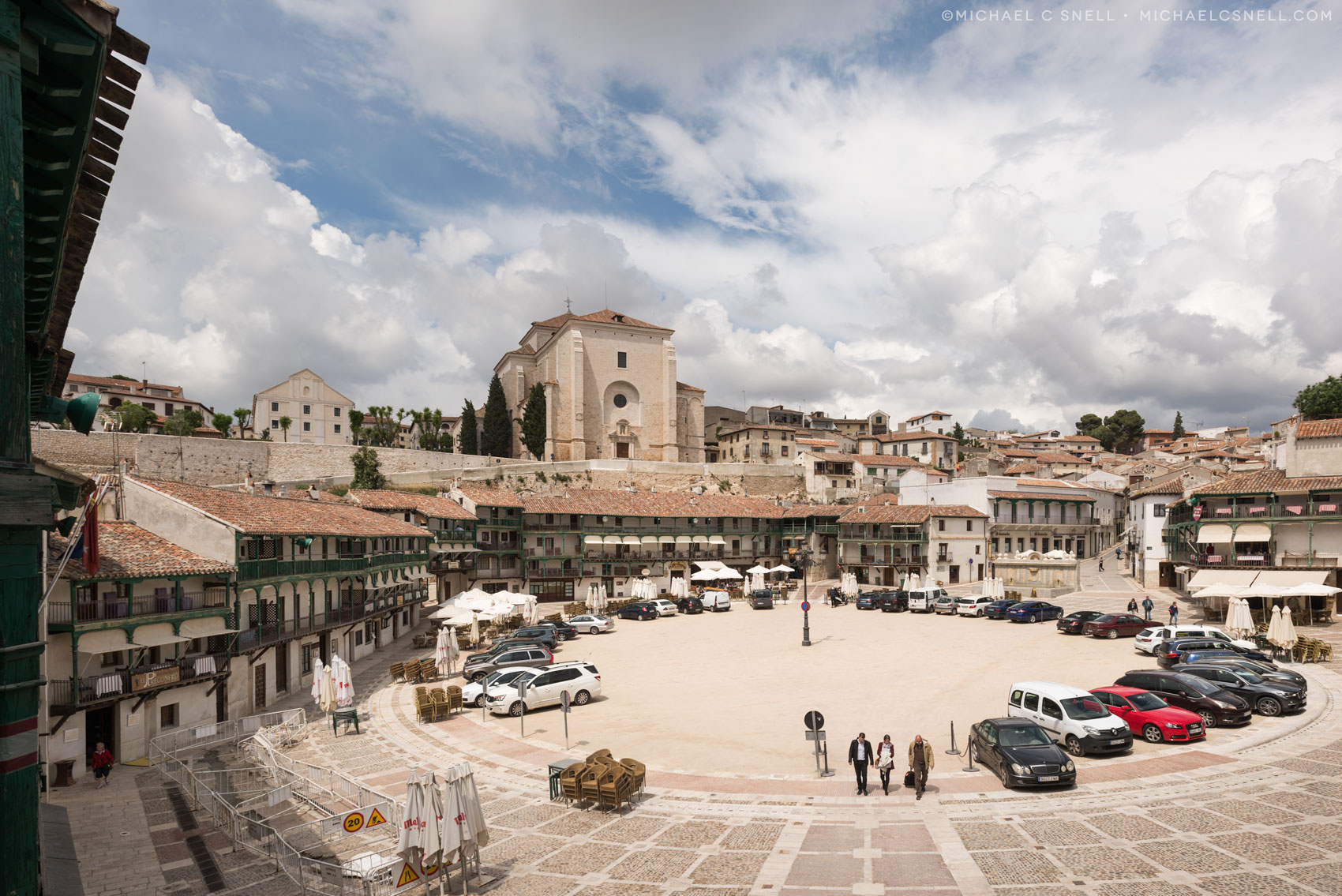
Final night at the Parador in Chinchon, where their parking lot is the plaza/bullring.
While there are times that it is liberating to not have to navigate for yourself and just get on the bus or train, I’ll always enjoy the freedom of driving a car. Hertz proved great to work with and the Spanish roads were all well-maintained and well-signed. Unless you have an aversion to roundabouts, of which there are MANY, getting around via Spain’s highway system is pretty straightforward for an American tourist. Just brace yourself when you enter historic districts. Sometimes it’s best to find a place to park and walk — the one form of transportation that I find even more appealing than driving.

